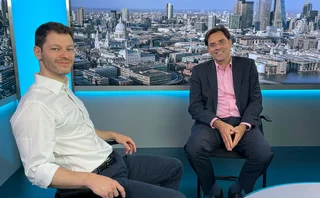
Should you hedge or should you wait?
New paper introduces quantitative framework for optimal FX hedging
It’s no secret that foreign exchange market-makers offset the bulk of their risk internally by matching client trades against each other. There are good reasons for doing this. By internalising risk, rather than hedging on external venues, dealers can avoid crossing spreads and paying brokerage fees. Clients also benefit, as internalisation reduces market impact. But when volatility rises and client flows become one-sided, market-makers must quickly pivot to external venues to hedge their risks. Whether to skew prices and wait for offsetting client flow, or hedge with other dealers in the open market, is a decision that is usually left to traders. But traders have little more than their judgment and experience to go by.
“This problem is part of everyday life for an FX dealer but is seldom addressed in academic research,” says Alexander Barzykin, director of the global FX and commodities team at HSBC.
Barzykin teamed up with two mathematicians – Olivier Guéant, a full professor of applied mathematics at Université Paris 1 Panthéon-Sorbonne, and Philippe Bergault, a post-doctoral researcher in applied mathematics at École Polytechnique – to rectify that.
In a paper published on Risk.net earlier this month, they define the choice between internalisation and externalisation as an optimisation problem in which the state variable is the inventory of the market-maker. Their model uses market parameters such as volatility and client trading activity in response to pricing to determine the optimal choice. The market-maker has full control over the prices quoted to clients and its trading activity on external venues. The underlying fair price, which informs client bids, is modelled as a Brownian motion and is influenced by market impact.
An innovative feature of the model is the segmentation of clients into tiers, which allows it to capture their response to prices changes more accurately. “In this paper, we offer a way to separate clients into tiers in a purely quantitative way, by analysing their trading flow. And then we show how to incorporate those tiers into the model,” says Barzykin. The client tiers can be formed in different ways. In the paper, clients are divided into two tiers based on their sensitivity to price changes. Some clients need to take certain positions, and their activity is less likely to be influenced by changes in price, while others are more likely to trade when they see an attractive price.
At a high level, the research suggests an internalisation rate of around 80% is optimal for G10 currencies, though this can vary depending on market volatility and client flows. “Under standard assumptions of risk tolerance and daily turnover, the model indeed confirms that this level of internalisation is optimal on average,” says Barzykin. The finding correlates with current industry practices, while the optimal risk neutralisation time derived from the model was also in line with market norms.
Mixing approaches
The paper draws inspiration from existing research. “On one hand we have Avellaneda-Stoikov’s paper, which was a very influential work about market-making strategies but focused on internalisation. On the other hand, there is the Almgren-Chriss model, which deals with the algorithmic execution on all-to-all platforms,” says Barzykin. “From an FX dealer’s perspective, it’s very natural to bring them together, because pure internalisation helps to maximise spread capture but comes with flow uncertainty and thus price risk, while externalisation helps to control risk but comes with transaction cost and market impact. To deal with the co-existence of requests for quotes and access to liquidity pools, we need both works.”
Pulling all of that together was mathematically complicated due to the fact that client flows are discrete while trading on liquidity pools is continuous.
“When you mix discrete and continuous you need to handle partial integral differential equations, which are not very friendly,” says Barzykin, “but Philippe and Olivier are brilliant mathematicians, so we went through the problem.”
The obvious use-case for the model is to determine the optimal electronic pricing and hedging strategy for FX market-makers, but Barzykin says the “qualitative understanding is of no less value – the model clearly answers the dilemma of whether to hedge or not to hedge”.
The research could lead to further breakthroughs. Optimisation problems such as this one can be difficult to solve using model-free deep learning approaches due to the large number of variables, which necessitate a huge amount of training data. Parametric models such as the one presented in the paper are better suited to this task, but once developed, they can also aid the training of deep learning engines. “It can provide a realistic benchmark which you can simulate a sufficient number of times to train the neural network before engaging in a model-free journey,” says Barzykin.
For Barzykin, the journey continues. So far, the model has only been applied to a single currency pair, but he has already worked with Guéant and Bergault on extending it to multi-currency portfolios. The results of that work will be published in the near future.
Only users who have a paid subscription or are part of a corporate subscription are able to print or copy content.
To access these options, along with all other subscription benefits, please contact info@risk.net or view our subscription options here: http://subscriptions.risk.net/subscribe
You are currently unable to print this content. Please contact info@risk.net to find out more.
You are currently unable to copy this content. Please contact info@risk.net to find out more.
Copyright Infopro Digital Limited. All rights reserved.
As outlined in our terms and conditions, https://www.infopro-digital.com/terms-and-conditions/subscriptions/ (point 2.4), printing is limited to a single copy.
If you would like to purchase additional rights please email info@risk.net
Copyright Infopro Digital Limited. All rights reserved.
You may share this content using our article tools. As outlined in our terms and conditions, https://www.infopro-digital.com/terms-and-conditions/subscriptions/ (clause 2.4), an Authorised User may only make one copy of the materials for their own personal use. You must also comply with the restrictions in clause 2.5.
If you would like to purchase additional rights please email info@risk.net
More on Views
Podcast: Alexei Kondratyev on quantum computing
Imperial College London professor updates expectations for future tech
Quants mine gold for new market-making model
Novel approach to modelling cointegrated assets could be applied to FX and potentially even corporate bond pricing
Quants dive into FX fixing windows debate
Longer fixing windows may benefit clients, but predicting how dealers will respond is tough
Podcast: Piterbarg and Nowaczyk on running better backtests
Quants discuss new way to extract independent samples from correlated datasets
BofA quants propose new model for when to hold, when to sell
Closed-form formula helps market-makers optimise exit strategies
Podcast: Alvaro Cartea on collusion within trading algos
Oxford-Man Institute director worries ML-based trading could have anti-competitive effects
Podcast: Lorenzo Ravagli on why the skew is for the many
JP Morgan quant proposes a unified framework for trading the volatility skew premium
Counterparty risk model links defaults to portfolio values
Fed’s Michael Pykhtin proposes using copula models to capture effects of margin calls on default risk








